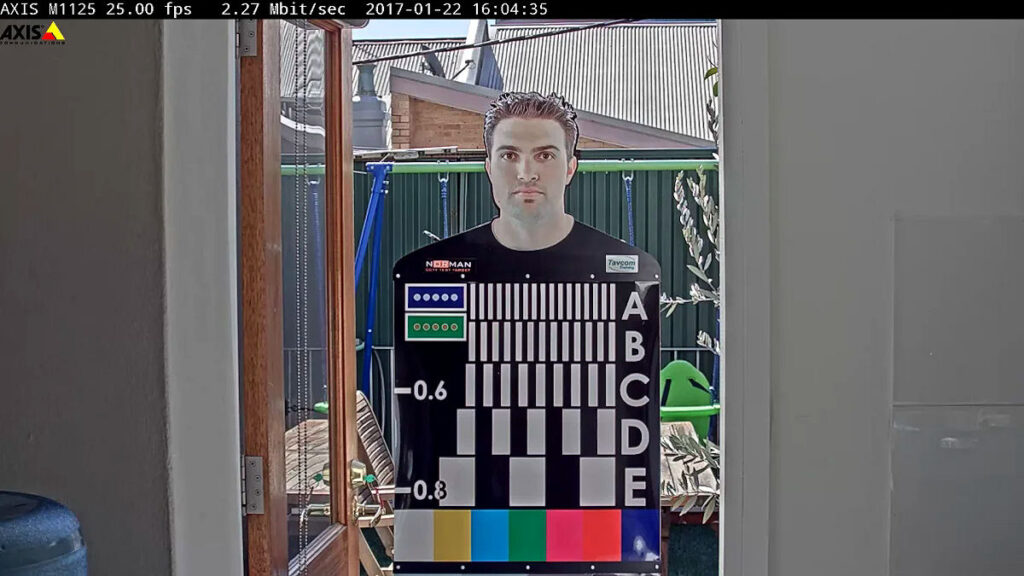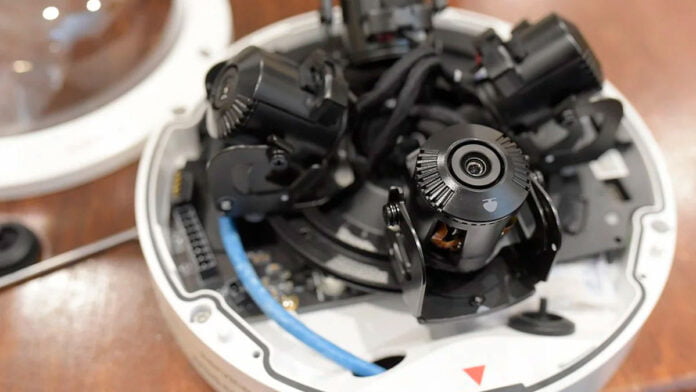Enhancing Depth Of Field What Works Best?
Enhancing Depth Of Field – In SEN’s opinion, what’s the best way to enhance depth of field – is it higher resolution or a narrower angle of view?
A: End users asking this question need to take a couple of steps back and ask some additional questions. For instance, what is the security team trying to achieve operationally and how much is the organisation prepared to spend to make those operational goals achievable?
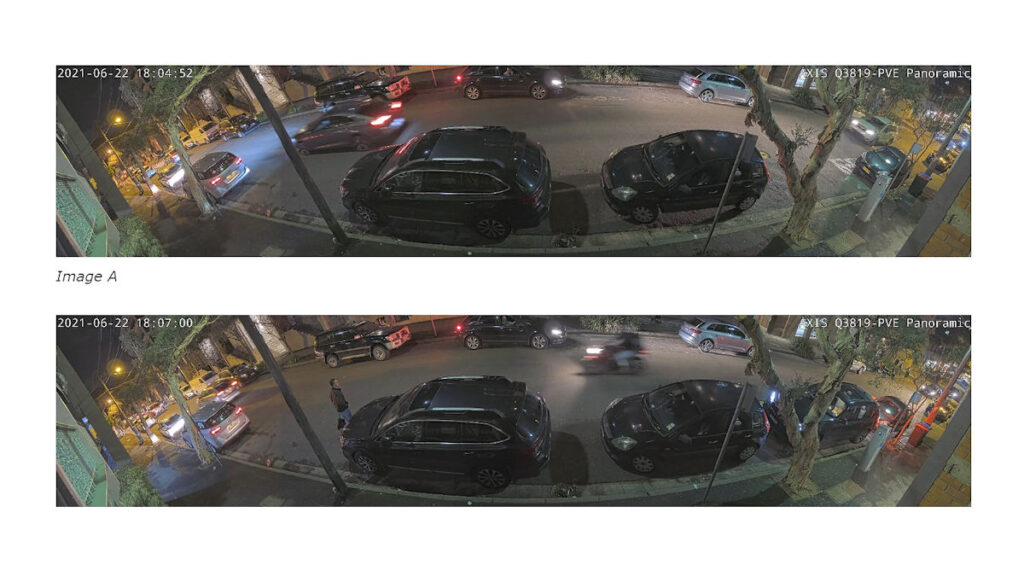
From a technical perspective, you’d also want to establish how many potential camera points there are in a scene and where these are. If there’s only one, you’re going to have to compromise low light performance, coverage, or the organisation’s bank account.
There are different ways to achieve depth of field in a scene – a wide angle camera, multiple narrow angle cameras situated different distances through the scene (these might be fixed or mobile), or a combination of these strategies.
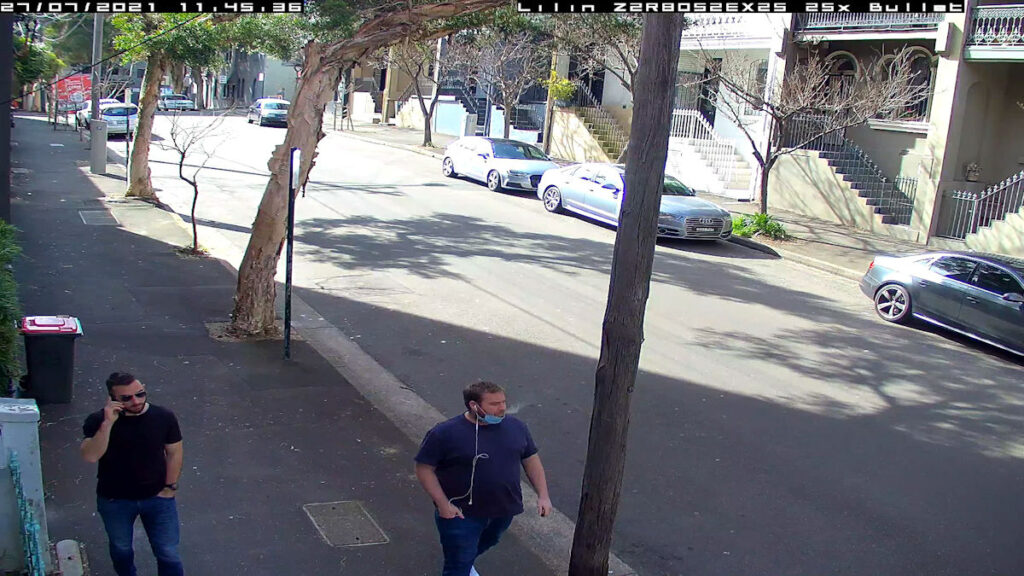
If money was tight, we’d go with the last option – to enhance depth of field across a 24-hour light cycle we’d select multiple thoughtfully targeted cameras with a narrow-angle fixed lenses as well as a higher-resolution camera with a wider angle of view and a bigger sensor size.
It’s tougher if you only have one camera point. In this case, another worthwhile option considering is a stitched multi-head camera system, which combines multiple mid-res cameras with longer focal lengths. This offers the best of both worlds – strong low light performance and very wide angles of view. But such cameras are going to be more expensive.
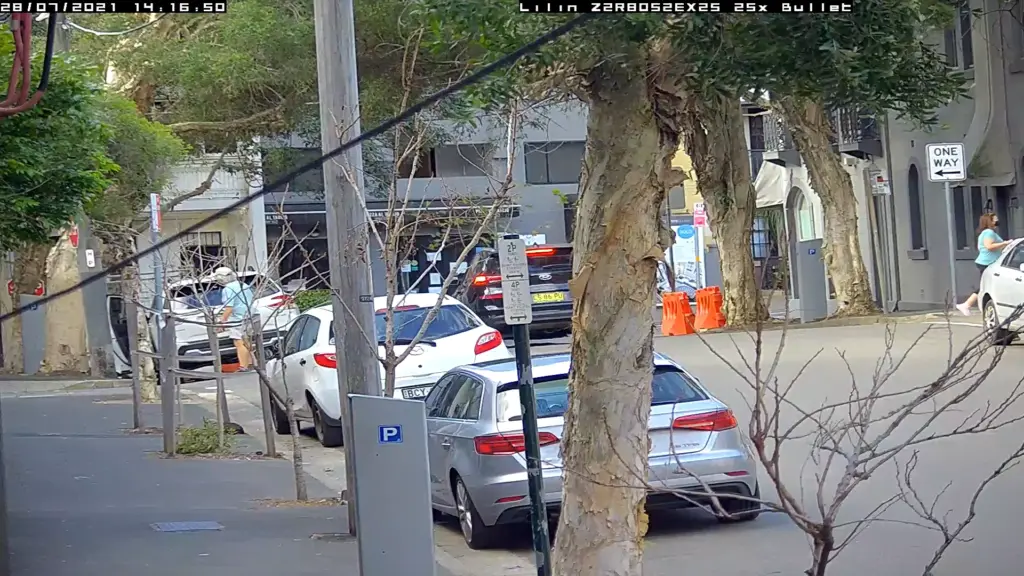
For deeper views from a single camera point, we’d be thinking about a multi-camera system like the AXIS Q3819-PVE panoramic day/night camera featuring 14MP resolution and a 180-degree angle of view, or the Bosch Flexidome Multi 7000i – there are plenty of others.
If depth of field is no more than 20 metres, you could look at the Bosch 5100 IR, or the i-PRO WV-S4576L panoramic cameras, or the options from Hikvision and others. Panoramic cameras are a very affordable way to get situational awareness from a single point – just pay attention to depth of field and performance in low light.
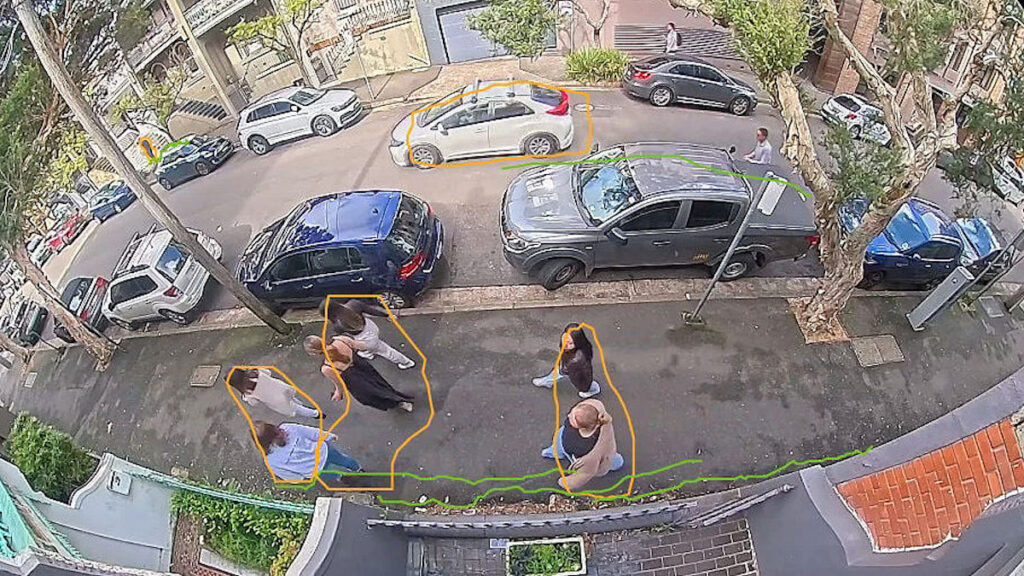
If you’re able to accurately predict areas of concern, you can narrow down the angles of view that require depth of field. With this information to hand, you can take your time deciding camera location, camera choice and lens choice – all factors that will come into play.
It’s always tricky to be sure of camera performance in a particular location without extensive testing. You really need to get on site with some gear and have a play around.
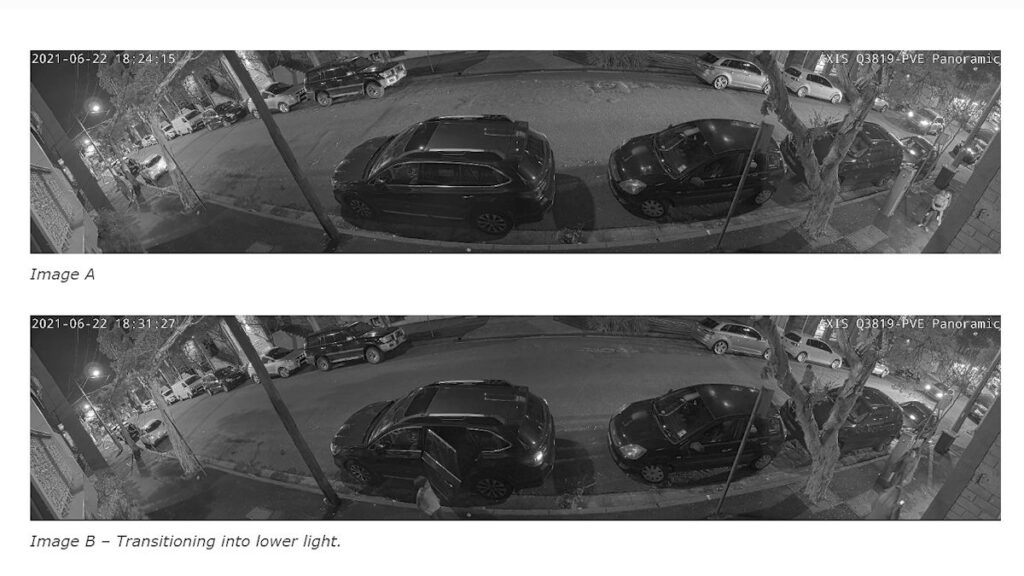
We’d argue the majority of modern wide-angle cameras with typical sensor sizes, pixel counts and very wide angles are not going to perform as well in low light as fixed lens cameras or fixed lens camera systems.
Adding higher resolution vectors to such sensors will simply crowd smaller pixels onto the same sized chip and this won’t deliver greater depth of field in low light. There will be too much amplification noise and too much signal buffering for the sorts of detail you need for court admissible evidence.
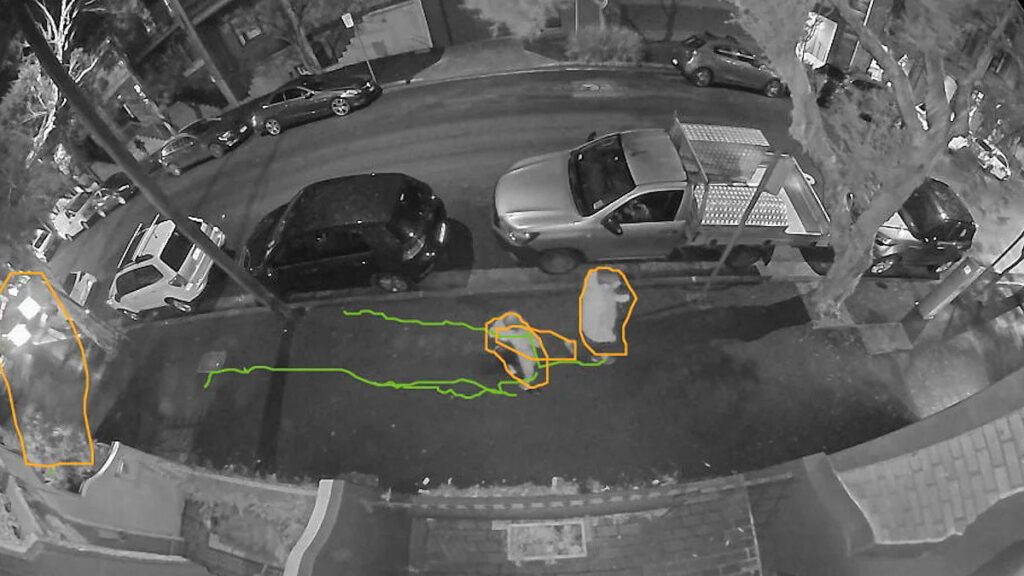
When the processor gets burdened and the camera engine tamps down frame rate in order to increase the electrical signal coming from the sensor, all sorts of creative things are going to start happening in the scene that will give zero operational benefit.
Sensor size is a factor. As well as giving more space for larger pixels, bigger sensors allow a camera engine to remain at base ISO for longer. This puts less strain on an image stream, giving better colour, resisting blooming, etc.
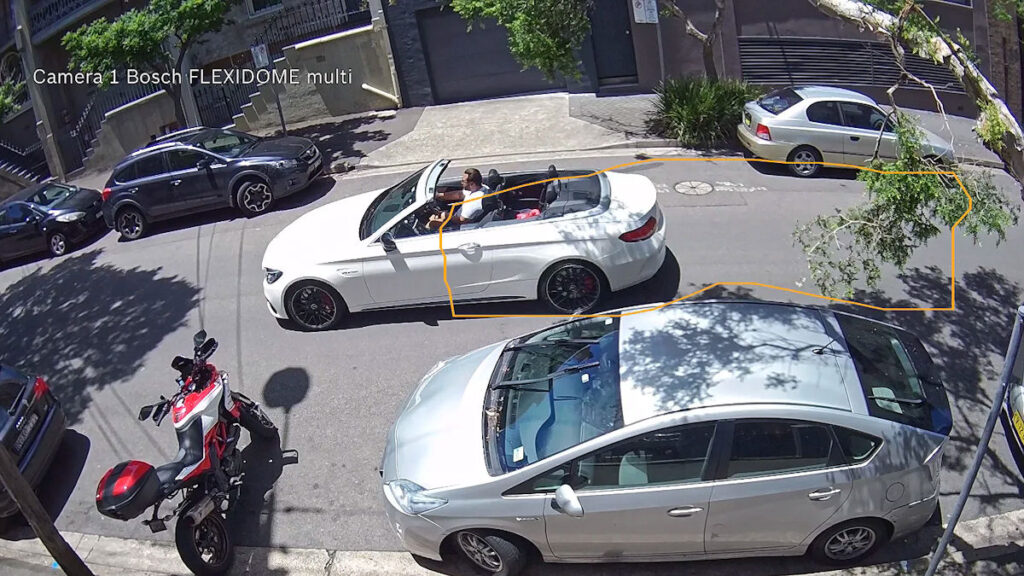
Entwined with this, bigger sensors allow cameras to record base ISO at smaller apertures – that’s important with motorised domes and bullets – smaller apertures mean enhanced depths of field, remember.
If you must use a single camera point and a wide-angle view, we’d be thinking to add some lighting to the scene – even if that just meets replacing existing bulbs with brighter ones when they are next replaced, or trying to cover the area with bands of direct lighting by tweaking floodlight angles.
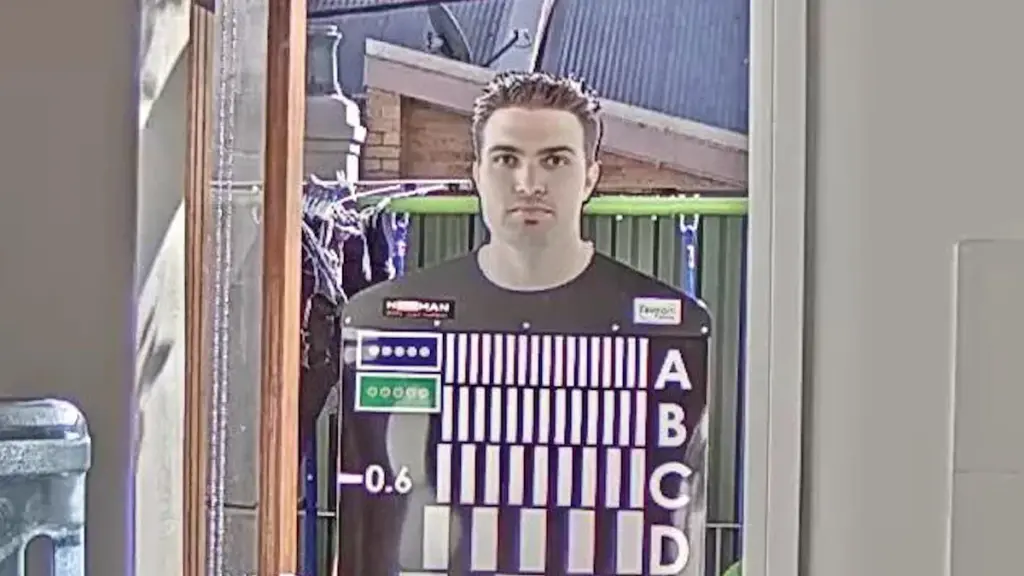
Another cheap fix is going to be using a better lens. With many modern cameras you’re stuck with the integrated lens option, but if you’re able to change the lens out for something better and faster, you’ll find performance will significantly enhanced – you can see that here and in the last images in this story.
In our opinion it’s better to capture some action in a scene that allows clear identification than it is to capture nothing useful at all. A system we’ve not talked about here is Panomera from CRK – if you’re a serious user that’s definitely something to see because in terms of outright performance for wide deep scenes, Panomera is the best.
You can find out more about recent low light CMOS sensors here or read more SEN news here.
“Enhancing Depth Of Field What Works Best?”
